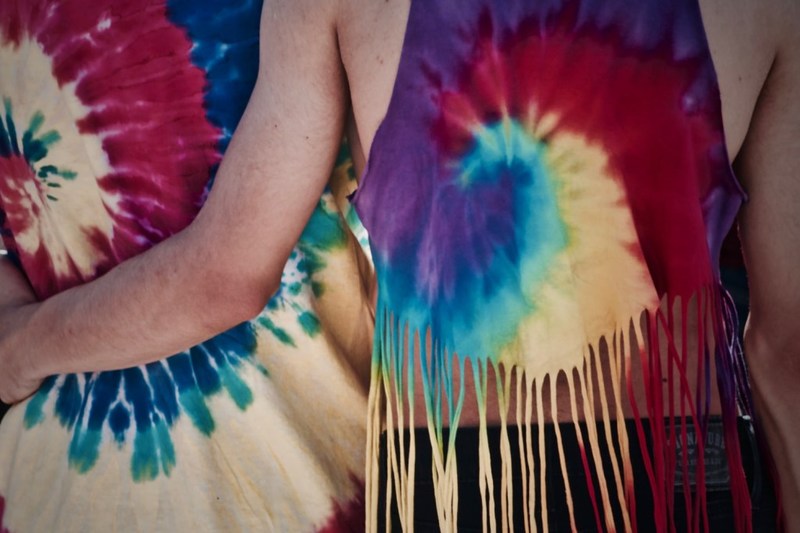
Colour can express our feeling and the Colour of This Year “2020” is classic blue. It seems coincidental to represent our feelings today referring to the psychological assumption and its meaning that ‘blue’ is likely to be associated with depth and stability but ‘feeling blue’ is meant to express grief and depression. To get away from all those feelings, many people have turned their homes with splashes of vibrant colour.
During self-isolation, many people have been trying to cope with the boredom and stress by reading books, others have honed their cooking skills and many others have tried their hand at craft projects, including tie-dyeing.
Whether you think tie-dye is totally stylish or not your style, the psychedelic print from the '60s is back in a major way. It's become a hot quarantine fashion trend that doesn't seem to be going anywhere.
"There's been a resurgence in craftsmanship and handmade goods over the last several years, popularizing '70s hobbies (macramé, weaving, tie-dyeing), but in a modern way. As countries continue to practice social distancing, it makes sense to me that people would connect with these handmade objects for comfort, to feel connected to humans and to nature," Stitch Fix colour expert Ryen Anderson said to Today.
Pinterest's experience researcher and in-house stylist, Larkin Brown, says searches for "tie-dye at home" are up by 462 per cent in the past few weeks on the site. "Since this is not the time to run out and shop, tie-dye is the style trend you can adapt into a DIY activity right at home," Brown said.
Searches for "how to crumple tie-dye," a popular technique, are up by 376 per cent on Pinterest. "While this process is relatively simple, it takes multiple steps and washes; just the kind of time extender we’re all looking for these days," Brown added.
Tie-dye is not a new thing in fashion but this homestyle creation has become popular during the pandemic as it can easily be made at home. The only thing we need is fabric, light-coloured garments, dye, rubber, and water. In tie-dye, the fabric is coloured by binding several parts of the fabric before dying to give certain colour effects.
Today, one makes tie-dye to upcycle old-fabrics. Some others make a splash of colour using tie-dye technique to create a new pattern as the colour of their clothes fades. Thecurrent trend is people use natural colouring for tie-dye and combine it with doodles and natural printing (eco-printing) using the colour from the leaves.
"The dyeing technique has deep roots from Africa. Many immigrants from various African countries brought their skills to the United States in the era of the 1700s to 1800s," said the Executive Director of the Pantone Colour Institute, Leatrice Eiseman.
In Indonesia, tie-dye is also known as jumputan. Some even combine jumputan techniques with batik. The popularity of tie-dye then surged in the US along with the emergence of the hippie subculture, a movement that was quite influential in the 1960s or commonly referred to as 'flower power' generation.
Tie-dye became a symbol and counterculture statement in that era. Since then, tie-dye has continued to sprout in the fashion world. Tie-dye trend itself does not stop only in clothing, but also other fashion items such as hats, shoes, bags, and accessories.







